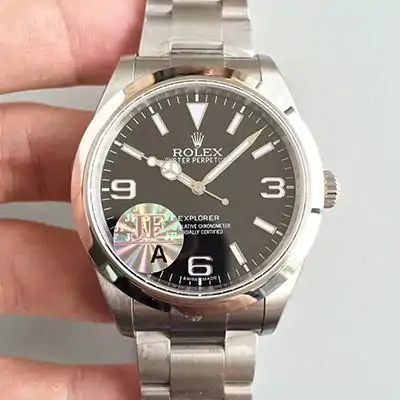Vintage Rolex watches are enduring symbols of exceptional craftsmanship, precision engineering, and a rich horological legacy. Revered by collectors and enthusiasts, these iconic timepieces transcend mere timekeeping instruments, embodying luxury, prestige, and a profound history in the art of watchmaking.
1. Timeless Aesthetics and Functionality
Each vintage Rolex watch encapsulates a moment in time, reflecting technological advancements and design trends of its era. The classic aesthetics coupled with robust functionality make these watches highly sought-after in the world of collectibles. They are more than accessories; they are cherished heirlooms, passed down through generations and considered valuable investments.
2. Distinct Features Setting Vintage Rolex Watches Apart
Vintage Rolex watches possess distinct features that set them apart from their modern counterparts. These features add to their charm and desirability, representing milestones in the evolution of watchmaking.
3. Acrylic Crystals: Aesthetic Appeal and Practicality
Acrylic crystals, made from Plexiglas or Perspex, were a staple in replica Rolex watches until the late 20th century. Their resilience to impact, ease of maintenance, and distinctive slightly domed shape add to the vintage charm. While sapphire crystals now dominate modern designs, collectors appreciate the unique visual appeal of acrylic crystals, symbolizing Rolex’s legacy of innovation.
4. Luminescence Evolution: Radium to Tritium
Radium’s strong luminosity in low-light conditions marked an era in vintage Rolex watches. In the 1960s, tritium replaced radium due to safety concerns, offering a softer glow with reduced radioactivity. The shift to Luminova in the late 1990s showcased Rolex’s commitment to innovation and safety. Yet, the allure of radium and tritium luminescence persists, reflecting Rolex’s historical journey through different eras of watchmaking.
5. Drilled Lugs: Practicality and Aesthetic Appeal
Drilled lugs, with small holes for easy strap swapping, characterize many vintage Rolex watches. A practical design element, they reflect Rolex’s commitment to functionality. Although phased out in modern designs for a cleaner look, drilled lugs remain cherished, adding historical charm to classic timepieces.
6. Bezel Evolution: Bakelite to Aluminum
The transition from Bakelite to aluminum bezels marked a significant phase in Rolex’s design history. While Bakelite offered a glossy finish and vibrant appearance, durability concerns led to the adoption of aluminum in 1959. Appreciated for resilience, aluminum bezels remained standard for decades, emphasizing Rolex’s pursuit of balancing aesthetics with functional durability.
7. Tritium Patina: Aging Gracefully
Tritium patina, a result of the natural aging process in vintage Rolex watches, adds character and history. The shift from white luminescence to cream, beige, or warm orange hues makes each watch unique. While the practical use diminishes over time, the aesthetic appeal of a well-developed tritium patina remains a prized feature for enthusiasts.
8. Tropical Dials: A Natural Transformation
Tropical dials, transformed by prolonged exposure to sunlight, exhibit unique patinas, varying in color and warmth. Highly coveted among collectors, these dials tell individual stories of past exposures and conditions, adding a layer of history and character to each timepiece.
In conclusion, vintage Rolex watches are not just timepieces; they are historical artifacts showcasing the evolution of watchmaking. Their distinctive features, despite drawbacks, contribute to their character and historical value, making them highly sought-after among collectors. with its extensive collection and expertise, provides a gateway to explore these vintage treasures, each narrating a unique story and contributing to Rolex’s enduring legacy in watchmaking.
